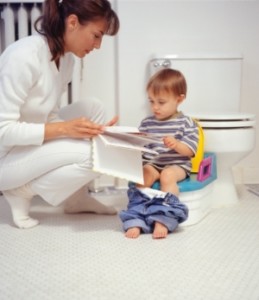How to Make Potty Training Boys Faster, Easier and More Enjoyable
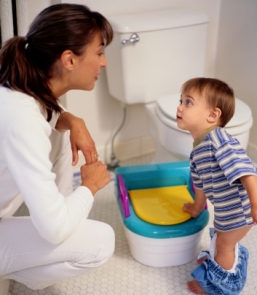 There are many silly moments which naturally surface when potty training boys. There are also some aggravations and trying times that you will only laugh about after you have finished potty training every little boy in your home. Your little baby is becoming a toddler, and after that they will become a little boy, pre-teen and then a teenager. Your job is to prepare them for toddlerhood and beyond through efficient potty training lessons.
There are many silly moments which naturally surface when potty training boys. There are also some aggravations and trying times that you will only laugh about after you have finished potty training every little boy in your home. Your little baby is becoming a toddler, and after that they will become a little boy, pre-teen and then a teenager. Your job is to prepare them for toddlerhood and beyond through efficient potty training lessons.
Yes, it is sad that your little guy is leaving the baby phase of life. It is important to look on the bright side and realize that you have a healthy boy who is ready to move forward and learn bigger and more impressive skills. They are ready to move forward, and you must be ready to let them do so.
Right now, your son may not fully understand how to take what he feels inside his body and translate that into signals to run to the potty. As he tries to figure out what you expect of him and how to listen to his own body, you will clean up many messes. There will be days when you want to scream and run away from home, but your love for your child will keep you plugged in and trying over and over again.
So now, are you ready for the good news? You don’t have to hide in the closet with a bottle of wine at the end of each potty training day. There are strategies you can implement to make this process easier, faster and far more enjoyable for all. “Enjoyable” may not seem like the right word, but it was chosen deliberately. You can actually enjoy taking your little man from diapers to pull-ups to big boy undies.
Potty Training Boys Advice
Once you announce that you may start potty training, you are bound to be overrun with opinions and ideas from everyone you know. Even acquaintances may chime in with their own opinions whether you ask for them or not. You may hear some conflicting ideas and wonder what is right for your family. It is important to remember that this is a personal process, and each child must find their own way to adjust to using the potty.
 Here at PottyTraining-Boys.net we offer a collection of strategies and suggestions that have been used by other parents interested in making this process easier. You are not expected to use every tip and trick featured on this site. Some of the ideas will work for your child, and others you will rule out right away because you know your child best. The idea is to give you a variety of options so you can select the potty training resources and strategies that may work with your child’s temperament, age and abilities.
Here at PottyTraining-Boys.net we offer a collection of strategies and suggestions that have been used by other parents interested in making this process easier. You are not expected to use every tip and trick featured on this site. Some of the ideas will work for your child, and others you will rule out right away because you know your child best. The idea is to give you a variety of options so you can select the potty training resources and strategies that may work with your child’s temperament, age and abilities.
Potty training boys can feel intimidating at first, but it doesn’t have to feel overwhelming and frustrating. Do your homework first so that you can set your little man up for success while reducing your own need to hide in the closet to pray for a stop to the madness.
How to Teach Bladder Control While Potty Training
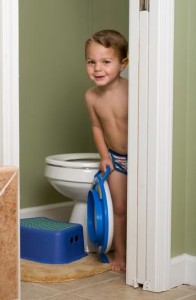 Bladder control is difficult to master, so you must expect some accidents while potty training. Children must learn to recognize the sensations that warn them that they need to use the potty, and then they must get to the potty, out of their clothing and into a seated position before their body starts expelling waste. Allowing your child to run naked or in light clothing that is easy to remove is a big start, but there are other things you can do to help your little one control their bladder to eliminate accidents.
Bladder control is difficult to master, so you must expect some accidents while potty training. Children must learn to recognize the sensations that warn them that they need to use the potty, and then they must get to the potty, out of their clothing and into a seated position before their body starts expelling waste. Allowing your child to run naked or in light clothing that is easy to remove is a big start, but there are other things you can do to help your little one control their bladder to eliminate accidents.
Getting Started
Mark a few days or one week off your calendar and plan to spend that time focusing on your child. Your goal during this initial training phase is to help your child begin to understand the concept of bladder control. Since your child has your complete attention without any distractions during this period of time, they will feel excited and eager to please you.
Allow your child to take some control of the process, since it is their body. Talk about how they may feel before they have to go potty and ask them to notify you when they think they may need to go. If they have an accident, talk about what they may have felt before going and how they can avoid that happening again. This is done calmly. Expect accidents to happen as your child develops greater bladder control.
Structured Potty Times
In addition to getting your child to the potty fast when they announce they need to go, there should be some structure so your child knows when to expect a potty break. For instance, you want to take potty breaks at the following times:
- Before naptime
- Before or after mealtimes
- Before bedtime
- Morning
You may start out taking structured potty breaks every half hour or so, but eventually your child will maintain enough bladder control that they can go a couple hours between potty sessions. Just make sure you are consistent with the potty breaks so your child expects them. You can use a timer so your child is actively involved in timing the sessions.
Make sure your child is drinking a lot of fluids between potty sessions. They will need to urinate more frequently if they are well hydrated. The more opportunities they have to control their bladder, the faster they will matter this skill.
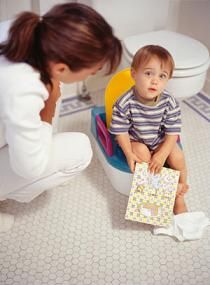 Turn Potty Sessions into Bonding Opportunities
Turn Potty Sessions into Bonding Opportunities
Potty training is more enjoyable for everyone if you focus more on spending time with your child and less on the accidents and messes. You must sit with your child while they are taking potty breaks, so why not sing songs, read books and talk about your day?
You can encourage your child to potty by turning on running water or reading books that make them want to imitate the characters. Do the happy dance and show how proud you are when progress is made. When they can’t go, let them know that is okay and remind them to let you know if they feel the urge after you leave the bathroom.
What If Your Child Resists?
If you try to potty train your child with great consistency for two weeks or more and they are resistant, they are probably not ready to train yet. There is no set age that they must potty train. Respect your child and limit the damage by putting potty training off for another month or so. Your child may start to feel the urges naturally when the pressure is off them to do so.
Timing Your Potty Training Adventure
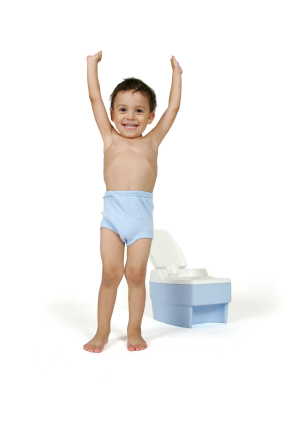 It is a given that you must consider your child’s readiness as you decide when to start potty training. If you see signs that they are interested in the potty and are more aware of bodily sensations related to potty training, you may be eager to get started. Before you rush forward, there are some things to consider beyond your child’s readiness.
It is a given that you must consider your child’s readiness as you decide when to start potty training. If you see signs that they are interested in the potty and are more aware of bodily sensations related to potty training, you may be eager to get started. Before you rush forward, there are some things to consider beyond your child’s readiness.
A Calm Period
You don’t want to start potty training at the end of the year in the midst of Thanksgiving preparations, Christmas parties and visits from family members. You also don’t want to potty train during a period of high activity or tense conflict. Your child needs a calm environment with a lot of time to simply hang around the house with the potty waiting nearby.
If you are distracted or feel pulled in a million directions, your child will also feel scattered and unfocused on potty training. Wait until you can give your child your complete attention and create a calm home environment without running out for errands. A long weekend away from work is the perfect opportunity to get the process started.
Parental Readiness
Once you start potty training, you will need to remain consistent so your child has no doubt what you expect of them and how the process works. This means your readiness is just as important as your child’s readiness. You need to potty train when you feel focused, energetic and up for the challenge. The fewer distractions you have in your life the better, but you may have to create fewer distractions if your life is super busy.
How do you create fewer distractions? You can take an extended weekend away from work and clear your family’s schedule to get started. Make sure there are no vacations or important appointments that will drag you away from your child during this time. Commit fully to giving your child a good start to the process before life gets busy again.
One Challenge at a Time
Only give your child one big challenge at a time. This means you do not want to start potty training while trying to wean your child away from the bottle or into his or her own bed at night. These major transitions in life are stressful and may be confusing for your child. If you throw in even more life change, they are less likely to respond to any of it in a positive manner. If now is the time to potty train, leave those other changes for later.
Mark Your Calendar
Once you decide a period of time that is good for your schedule, mark it on the calendar. This is your appointment with your child, and you can get excited about spending this special time just with your little boy or girl. If you are flexible on time, allow your child to select a date on the calendar. Mark that day and allow him or her to get excited about the upcoming training appointment.
Should You Wait?
Deciding when to start potty training is sometimes difficult. If you know your child is ready to learn right now but you are about to go on vacation, do you need to wait until vacation is over? What about a child who is overly eager to explore the potty? Will they lose interest if you put it off until a better time in your life?
Most children require at least a few months of consistent training before they are completely potty trained. It can take six months or longer for some children to fully grasp the concept and take control of their potty behaviors. This means you are not going to fully conquer potty training in one long weekend.
The idea is to set aside a short period of time during which you can focus completely on potty training. Introduce the process during this time, and then remain consistent with training until your child is fully trained. If you can find a couple days right now to get the process started and your child is ready to learn, then go for it.
If you know you are distracted and cannot give your child the focus they need to get started, then you may allow them to explore the potty when possible while putting off serious training for later. Your child will need to learn a completely new skill set in order to use the potty independently. Besides understanding what the potty is used for, they must also learn how to physically control their bodies to make it happen at the right moment. This is challenging and sometimes stressful for a child.
Most children learn these new skills in the following order:
- Bowel regularity
- Bowel control
- Daytime bladder control
- Nighttime bladder control
Some children will reach some of these milestones simultaneously. Others will take some time between milestones. Every child is different, and you will notice that siblings are quite different in how they learn to potty.
You must decide how aggressive you are in the training process, and that my be determined by your child’s attitude or interest in the potty. If you take a laid back approach, make sure your child still understands what is expected of them when you start potty training.
Determining Potty Training Readiness – Is It Time for Your Child to Start?
Some parents are so tired of the diaper-changing process that they try to force their children into potty training before they are even ready to begin. Other parents are overly cautious about waiting for their children to show signs of readiness, so they end up starting the potty training process far too late. The result in either of these cases is complete failure and unnecessary stress on the child.
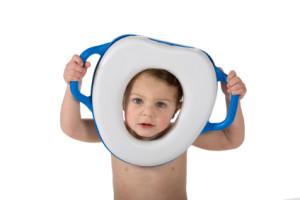 There is a lot of debate over when children should begin training to use the potty, so how do you determine what is right for your child? You can avoid the drama that many parents experience by simply watching your child for signs of readiness. It is important that you do this for each child, since every person is different. One child may easily make the leap from diapers to potty before they turn two while another child shows no interest in the potty until they are three.
There is a lot of debate over when children should begin training to use the potty, so how do you determine what is right for your child? You can avoid the drama that many parents experience by simply watching your child for signs of readiness. It is important that you do this for each child, since every person is different. One child may easily make the leap from diapers to potty before they turn two while another child shows no interest in the potty until they are three.
There are some general guidelines that may help you decide when to start talking to your child about potty training, but there are not set ages at which children should start potty training. It is well known that girls tend to step out of the diapers faster than boys, but there are exceptions. Boys are more likely to struggle with bowel control even after they have successfully trained to urinate in the potty. The most common age for potty training readiness is two.
Signs Your Child is Ready to Train
Now that you understand the importance of checking for potty training readiness, what specific signs may tell you that a child is ready to train? There are 14 common signs that you may notice, but your child may be ready without showing every sign on the list:
1. The child has developed consistent bathroom habits. Rather than having random bowel movements, this occurs at a predictable time most days.
2. The child stops dirtying his or her diaper during the night or naptime.
3. During the day, it is common for your child’s diaper to remain dry for three hours or longer on a regular basis.
4. Your child discusses issues related to potty training and understands the concept of going potty. This includes understanding the connection between keeping their pants dry and going to the potty.
5. Your child shows signs that they acknowledge their need to use the bathroom and/or alerts an adult when they dirty their diaper.
6. Your child understands basic terminology related to potty training, such as dry vs. wet, potty, pee and poop.
7. The child is becoming more independent and wants to do things on their own.
8. The child understands what you want them to do when you say something like, “Come on! Let’s go potty!”
9. The child is physically capable of pulling pants and underwear up and down.
10. The child wants to copy what they see their parents or other family members doing.
11. When watching someone else use the restroom, the child asks questions and seems interested.
12. The child shows an interest in washing their hands or flushing the toilet.
13. The child seems eager to please adults and do what is asked of them.
14. The child understands that belongings should be placed in their proper place and shows a desire to put things away and do things properly.
You don’t need to check off every item on this list to determine that your child is ready to start potty training. If you are uncertain, start introducing books and videos related to the subject or bring in the potty seat to see how your child reacts. If your child still seems unwilling to do anything you ask them to do, you may want to wait until they are out of that disobedient phase.
While waiting to see the signs of readiness, you can encourage readiness in your child. For instance, they may never show you their interest in flushing the toilet or reading on the potty if you don’t give them access to the bathroom.
Now that you know what signs you are looking for, you can do things differently in your home to check for your child’s readiness.
Tips for Successfully Potty Training a Boy
Many parents dread the potty training process because they have heard that little boys have poor aim and make a lot of messes when they first start learning. While you have to expect some accidents during the toilet training process, effective parental guidance can take the hassle out of potty training a boy to use the restroom without making a mess.
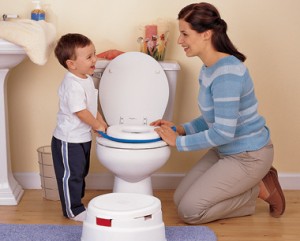 If you can show your little boy what you expect of him and introduce him to the tools he can use to meet those expectations, he is likely to be potty trained quickly without tons of messes. The first step is to create a clear procedure for training. From there, you can introduce this procedure to the child in an understandable manner. The following tips will help you do that effectively.
If you can show your little boy what you expect of him and introduce him to the tools he can use to meet those expectations, he is likely to be potty trained quickly without tons of messes. The first step is to create a clear procedure for training. From there, you can introduce this procedure to the child in an understandable manner. The following tips will help you do that effectively.
Role Model Proper Behaviors
The easiest way to show a child what you want them to do in the bathroom is to let them see the desired behavior in action. If you have an older boy in the family who is already potty trained, he will likely volunteer quite eagerly to become the role model. The boy’s father could also become a role model for proper potty procedure. Ideally, mothers and sisters will only role model for little girls, but that may not always be possible.
It is understandable if the father or older brother of your little man is a bit gun shy when it comes to being watched in the bathroom. Reason with them that this is their child, grandson or otherwise a close relative, and they are only watching because they need to learn quickly. Most men and boys can get over their discomfort long enough to help out.
Does your little guy have a friend who is already potty trained? It may motivate your child to potty train faster if they watch their friend doing it. Peer pressure is not always a bad thing, right?
Recognizing Wetness
Every little boy must recognize the difference between three stages of wetness before they can effectively potty train:
- About to wet
- In the wetting process
- Already wet
Starting out, most little boys will only acknowledge wetness after they are soaked in urine. Your job as a parent or guardian is to help him identify the sensation that comes before he actually urinates. This is done by paying attention to the child’s behaviors immediately before he pees his diaper or has an accident.
For example, you may notice that your little boy stops playing or makes a funny face just before using the bathroom in his pants. You can stop him at that exact moment and help him to understand that the sensation he feels right then signals that he is about to use the bathroom.
Putting a name on the action of using the bathroom is more effective when potty training a boy than asking general questions. For example, many parents notice that a child is pooping and say, “What are you doing?” It is more effective to say, “You are pooping now. Do you see how that feels?”
Naked Training Times
Whenever your boy can run naked for the sake of potty training, allow it. This allows him to sit directly on the potty when needed without taking the time to pull down pants and underwear. It also makes it far easier for him to see what his body is doing and how that correlates to how he feels before, during and after a potty session.
This method of potty training may lead to accidents, so make sure you have carpet cleaner on hand. You can also set your child’s potty on tile or linoleum bathroom floors so it is easier to clean up any mistakes. Make sure you do not scold or shame him for these mishaps since they are an expected part of the potty training process.
Identify Correct Locations for Potty Breaks
Start changing your child’s diaper in the bathroom and place the plastic potty next to the big potty in the bathroom. You want your boy to identify the proper place for using the bathroom so that they start to use it in inappropriate places less frequently. Little boys two-years-old and older do not need to be changed on a changing table, so make full use of your restrooms.
Naming Activities
You can use exact terms for “pooping” and “peeing” that come naturally to your child, but make sure that you are using specific terms. For example, “using the bathroom” or “going potty” is far too general to help your child identify what he is doing. Go with “peeing” and other terms that identify specific behaviors.
Avoid terms like “stinky” because you don’t want your little boy to think of using the bathroom as a negative activity. This is a natural part of being human, and they should not feel embarrassed about it.
Open Discussion about Potty Behaviors
Start conversations with your child about the wonderful things that come along with potty training. You may tell him that he can spend more time playing once he is potty trained since he won’t have to stop for long diaper-changing sessions. You can tell him that he will feel more comfortable when he doesn’t have to wear a diaper, and diaper rash will no longer bother him.
Listen to your child’s response to these ideas. If he is big enough to comprehend what potty training is, he will have ideas and thoughts on the process. Make sure to answer all questions he has in a positive light.
Pull-Up Dress-Up
If your son is interested in playing dress-up with his pull-ups, let him do it all he wants. This practice will make him more comfortable with the potty training process and may get him excited to use the bathroom and get rid of his diapers. Get to the store and let him pick out his own big boy underwear and talk to him about not getting them dirty or wet so he can wear them longer.
Set out a small potty chair and give your child permission to sit on it whenever he wants. He may read books or play with toys while sitting there, even if he does have clothing on. The goal is to make him comfortable and familiar with all equipment used to use the restroom. Even if it becomes his favorite toy and he drags it all over the house, at least he is getting used to the idea of sitting on it.
Your child may also enjoy setting dolls on the potty and pretending they are using the bathroom. He may have a special doll or bear that is used only for this purpose so that it feels like a special toy.
You may also let him flush the toilet when you are in the bathroom to supervise. Talk about his poop and pee hitting the water, and allow him to wave bye as he flushes. He will get used to the sound and may get so excited about flushing that he wants to use the potty faster.
When you feel he is ready, you can start explaining how he should pull down his pants and use the potty for real. Explain where the poop and pee must go and how he must relax his body to let it leave. His reward is getting to flush and watch it disappear.
Celebrations and Excitement
Throw a party to get rid of your son’s diapers. Wrap up underwear with characters or pictures that he will like and let him open them while you are excited and happy. Whenever he makes a step toward being potty trained, throw little celebrations and shower him with hugs and kisses. Tell him how proud you are of him. The more positive attention he gets from you, the better.
Potty Training Your Boy Made Easy
Is it time to start training your boy for the potty? If so, have a look at this video.
Some great tips and advice that will help make the transition from diapers to toilet seamless.
